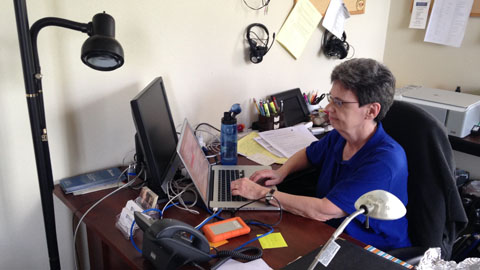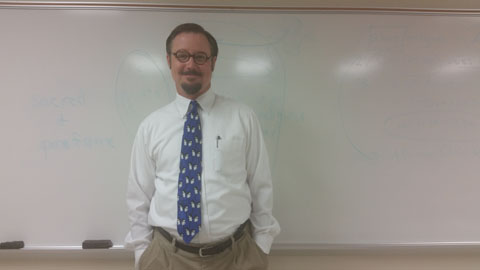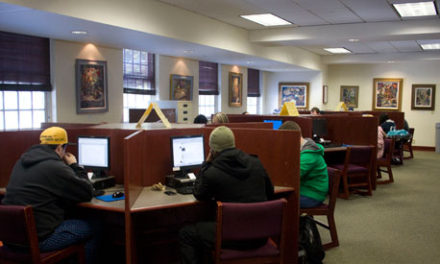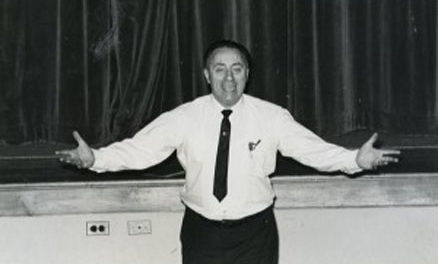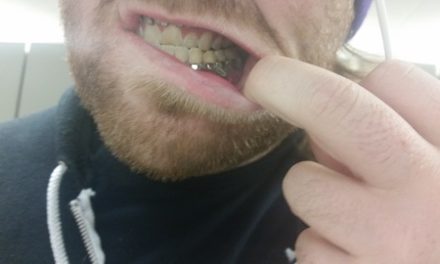By Brittany Wilson and Kristen Griffith, The Whetstone
Senior Dylan Kaplan is happy about the changes to his major, Multimedia Communications.
“It shows that we’re trying to improve,†he said.
Multimedia – which used to be called Media Arts – is one of four Wesley College academic departments that revised or completely revamped their curriculum. History, Philosophy and Religion, and Kinesiology also modernized and restructured several aspects of their programs.
All the changes went into effect this semester.
Aside from the name change, Multimedia Communications also added specific concentrations. The History program lowered their credit requirements and added several new classes. Philosophy and Religion got rid of old courses and added new ones. And Kinesiology added two new programs.
Dr. Jeffery Gibson, interim vice president of academic affairs, said it is just a matter of good timing.
“Because the old core overlaps so much with major requirements, almost all departments on campus have made some change to their program, in order to reflect the new core curriculum,†he said. “Because there is so much happening right now, it is an opportune time to make those sort of changes, the whole faculty is in a mode of curricular restructuring.â€
Multimedia Communications
Changing the name from Media Arts to Multimedia Communication was important, said Dr. Tery Griffin, Chair of the department.
“Media Arts is an old name,†Griffin said. “It’s now all about multimedia. We’ve been a multimedia program for a long time. This is the name people Google when they are looking for a program like ours.â€
Aside from the main program, Multimedia Communication has added Multimedia Storytelling and Digital Media concentrations.
“Multimedia Storytelling is designed for writing and publishing, whether print or digital materials,†Griffin said. “That one has a heavier focus on writing.â€
Kaplan said he wants to pick up Digital Media as a concentration.
“I want to do communication in sports,†he said. “Digital Media is more toward broadcasting.â€
The Digital Media concentration is for students who like “creating and manipulating†video, audio, photography or things on the Web.
“It has a heavier focus on production,†Griffin said.
Griffin said it has been 20 years since the program had any major changes. They started out using analog cameras, and dark rooms.
“The world has changed a lot in 20 years,†she said. “We just want to make sure our students are prepared for the current environment.â€
Griffin said recently-hired Professor Ron Douglas brought new skills to the table, including animation.
Douglas said he can do stop-motion animation and motion graphics.
“Animation is fun to teach and is very time-consuming,†he said. “You spend eight hours and you only get eight seconds.â€
Douglas said he is looking forward to the animation class.
“It’s always interesting to see what students do,†he said. “Once you show someone how to do it, it doesn’t take that long for them to do it.â€
History
Dr. Anthony Armstrong, professor of political science and Chair of the History program, said changes needed to be made.
“(The changes) reduced the number of required history credits from 48 to 36,†he said. “And it reduced the number of specific required courses.â€
Armstrong said Wesley’s required credits for history had been high compared to 21 other schools similar to Wesley.
He said 33 credits was the median, 42 was the highest and 27 was the lowest. Most of the school’s history program required courses outside of history, unlike Wesley’s.
“The 48 credits here required nothing but History and American Studies, but that’s basically History,†he said.
Armstrong said the goal was to create a balance. A history student can now choose a concentration between U.S. History or World and Regional History.
“It creates a new flexibility,†he said.
Armstrong said the program is no longer allowing 200-level classes to be taken at the 300 level. And new 300-level classes will be added.
Five classes were eliminated, and several added, including “In Search of God and Self,†“Money and Sex,†and “Tyrants in World History†at the 300 level.
Armstrong said he and the department, which voted on the changes, want to make things better for History majors.
“I think students will find many of the interesting courses they’ve taken were special topics,†he said. “Now there will be a lot more interesting courses in the catalog for them to take.â€
Philosophy and Religion
Because of the new Common Core that was implemented last year, the religion class that all students had to take was eliminated. The new Core’s second level classes, however, include four sections, one of which is called Philosophy and Religion.
The department eliminated all of its 100-level courses—“Literature of the Old Testament,†“New Testament†and “World Religionsâ€â€”which were made obsolete by the new Core. The “Historical Jesus†was also deleted.
The Philosophy and Religion Department created new courses to replace those which were deleted, including, “The Torah: Law and Tradition,†“Prophets and Social Justice,†“Jesus, Gospels, & Canon,†“Paul and the Early Church,†and “Introduction to Black Theology.â€
“I think these changes strengthen the major in Philosophy and Religion,†said Dr. Jeffery Mask, professor of religion, philosophy, and American studies. “We have more offerings from which students may choose what they take, and some provide more depth of knowledge.â€
The department has developed two new courses at the 100-level, which will double as First Year Seminars: “Nature and the Supernatural – Intersections of Religion and Science,†and “Sacred Story: Myth and Scripture.â€
Dr. Alban Urbanas, chair of the Philosophy and Religion department, said the courses introduce freshmen to new ways of thinking, whether they be philosophical, religious, or both.
“These courses stimulate interest in what philosophy and religion offer,†he said. “Students learn to see life through different lenses and begin to recognize all of the benefits of learning how to think critically and conceptually, rather than in a narrow way.â€
Mask said the departmental changes are bittersweet.
“The new Core is better in some ways than the old one, but at the same time it is weaker in others,†he said. “In developing the new core the faculty focused on skill sets to the exclusion of everything else.â€
Urbanas is positive about the changes.
“It gets us thinking about what we have done well in the past so we can apply that in the future, and considering new opportunities, new kinds of courses, and new collaborations with other programs,†he said.
Kinesiology
The Kinesiology department’s Pre Physical Therapy program was implemented this semester. This major will provide students with the prerequisite courses necessary to apply for a graduate level program in physical therapy.
The Kinesiology department also is instituting a similar undergraduate program for pre-occupational therapy, said Barbara Abbott, associate professor of kinesiology.
“The pre-OT program will serve as an avenue for those students who know as freshmen know they want to be a licensed occupational therapist,†she said. “You can’t just graduate from high school and get into the master’s program, you have to take the prerequisite courses at the undergraduate level first.â€

